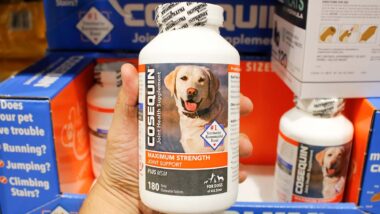Top Class Actions’s website and social media posts use affiliate links. If you make a purchase using such links, we may receive a commission, but it will not result in any additional charges to you. Please review our Affiliate Link Disclosure for more information.

The area most likely to suffer cement failure is the connection of the tibial component. X-rays might show a widening of the space between the bone cement and the related prosthetic component.
According to Cedars-Sinai, the existence of a space of two millimeters wide that does not progress any wider is considered normal. A larger space or one that slowly expands might indicate infection or aseptic (non-infected) loosening.
Other symptoms of aseptic loosening include the cement showing signs of fragmenting or fracturing, or the prosthetic components starting to migrate away from their originally placed position.
When the tibial component loosens, the part might lean into the tibia, which can be seen in a fluoroscopic X-ray.
When cementing knee replacement components, the surgeon has a choice of using low, medium, or high-viscosity cement formulations. Many doctors prefer to work with high-viscosity cement because the thicker mixture is easier to control and sets faster.
In some cases, bone cement failure has been seen more often in the high-viscosity mixtures.
Several brands of high-viscosity cement are under investigation for potentially showing signs of premature breakage or failing to bond at all:
- Cobalt HV Bone Cement (Biomet/DJO Surgical)
- DePuy CMW 1 Bone Cement
- Simplex HV Bone Cement (Stryker/Howmedica)
- SmartSet HV Bone Cement (DePuy)
Signs of Bone Cement Failure
A patient suffering from aseptic tibial loosening due to bone cement failure in the knee replacement components may exhibit the following symptoms:
- Persistent joint pain
- Newly evident chronic pain
- Knee instability
- Swelling
- Decreased range of motion
While these symptoms also might be indicative of an infection, an x-ray that makes use of fluoroscopic guidance can determine whether the patient is experiencing aseptic tibial loosening due to bone cement failure or an infection.
The National Institutes of Health published a study of 13 patients in 2016. The patients needed revision surgery less than three years after their initial total knee replacement surgeries because of persistent pain. The patients tested negative for any type of infection.
Eleven patients’ x-rays did not show evidence of loosening, but during the revision surgeries, the surgeons determined that bone cement failure led to the debonding of the tibial component, which was causing the pain. High-viscosity cement had been used in all of the original knee replacement procedures.
At least one lawsuit has been filed alleging bone cement failure was to blame after a patient required revision surgery. The patient was a woman who had total knee replacement surgery in January 2009. By late 2011, she complained of constant aching and throbbing. Her doctor found no indication of infection, and an x-ray indicated the knee replacement components remained in good positions.
A bone scan eventually revealed the tibial component had come loose, allegedly due to bone cement failure. She underwent a knee revision surgery in May 2012.
Even though high-viscosity cement offers faster drying times and better pliability during the surgery, some varieties of the surgical cement apparently went through the FDA’s fast-track program, which allowed the products to skip certain clinical testing requirements prior to entering the market.
If you or a loved one underwent revision knee replacement surgery or your doctor is recommending revision surgery three years or less after the initial implant and a bone cement was used, you may qualify to file a knee replacement revision surgery lawsuit. See if you qualify by filling out the free form on this page.
ATTORNEY ADVERTISING
Top Class Actions is a Proud Member of the American Bar Association
LEGAL INFORMATION IS NOT LEGAL ADVICE
Top Class Actions Legal Statement
©2008 – 2024 Top Class Actions® LLC
Various Trademarks held by their respective owners
This website is not intended for viewing or usage by European Union citizens.
Get Help – It’s Free
Join a Free Knee Replacement Cement Failure Lawsuit Investigation
If you qualify, an attorney will contact you to discuss the details of your potential case at no charge to you.
PLEASE NOTE: If you want to participate in this investigation, it is imperative that you reply to the law firm if they call or email you. Failing to do so may result in you not getting signed up as a client or getting you dropped as a client.
Oops! We could not locate your form.












